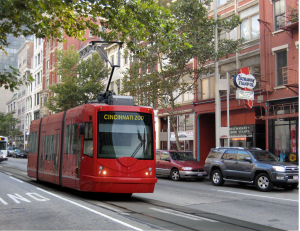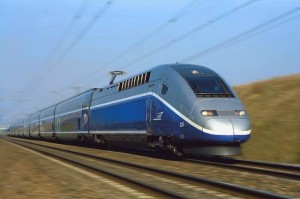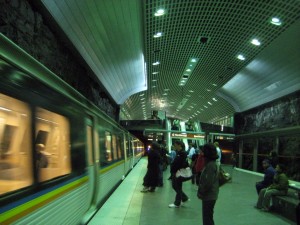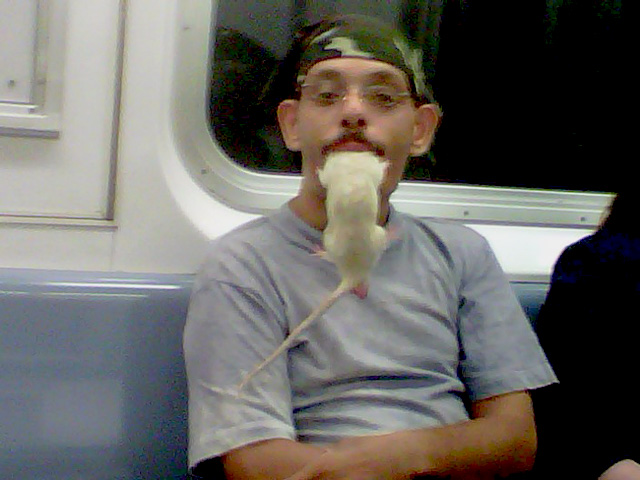Happy Friday the 13th! The Friday News Roundup is the first of a weekly series featuring a few of the top transit, rail, and infrastructure-related news stories of the week. Be sure to follow @MetroCincy on Twitter to receive links to transit-related news articles and blog posts throughout the week.
The Cincinnati Enquirer, after throwing everything but the kitchen sink at the Cincinnati streetcar project, comes out and admits the obvious when City Council takes what may have been their final streetcar-related vote before construction actually begins:
Our friends at the Cincinnati Beacon, though, apparently haven’t gotten the memo. In their never-ending fear-mongering vendetta, they first said the streetcar would create cobwebs. Then they said the streetcar would be threatened by banana peels. Then they said the streetcar couldn’t turn corners. Then they said the streetcars will block traffic. In his latest anti-streetcar screed, Michael Earl Patton claims the streetcar will threaten private property on Vine Street, citing a study that says no such thing. Give the man an “A” for effort, though:
Will Houses Have to Go? Squeezing the Streetcar Onto Vine
In the past I have criticized the proposed streetcar route for different engineering problems: for the steep climb up Vine Street , for not allowing enough room for turns, and for blocking traffic. Now I find a new problem: Vine Street is too narrow for 4 lanes of traffic shared with streetcars. Either a lane will have to be eliminated or Vine Street widened.
While professional rabble-rousers team up with anti-government extremists to fight a simple, common-sense project such as the Cincinnati streetcar, our nation’s infrastructure continues to crumble. Building nationwide high-speed rail and investing in urban transit will create thousands of jobs, help revive the economy, and renew our cities, but defenders of the status quo refuse to even consider it. And it isn’t just a Cincinnati problem. Nobel laureate Paul Krugman hits the nail on the head with a recent column:
The lights are going out all over America — literally. Colorado Springs has made headlines with its desperate attempt to save money by turning off a third of its streetlights, but similar things are either happening or being contemplated across the nation, from Philadelphia to Fresno.
Meanwhile, a country that once amazed the world with its visionary investments in transportation, from the Erie Canal to the Interstate Highway System, is now in the process of unpaving itself: in a number of states, local governments are breaking up roads they can no longer afford to maintain, and returning them to gravel.
Krugman’s column is a must-read, and touches on some important themes that we will revisit here in the future.
Tom Downs at Citiwire.net expands on how penny-pinching is impacting public transit, despite the resurgence of interest in livable cities:
Public Transit: Bleeding to Death from a Thousand Cuts?
I will show my age when I say that I remember the last of the streetcars being ripped up to make way for the automobile. Fifty some odd years latter, it seems every city in America is betting its economic future on new light rail systems. Therein lies the story of the modern American experience with transit.
After throwing transit away, we now want it back. We just don’t want to pay for it.
On a happier note, the Philadelphia Inquirer has published a must-read special section about high-speed rail in the United States:
Fast Track: Is America Ready for High-Speed Rail?
In Europe, fast trains are transforming the continent, bringing cities and countries within a few hours of one another, erasing centuries-old regional divisions, resuscitating long-dormant towns, cutting air pollution, creating new economies and manufacturing jobs, and, in a reversal of 20th-century fortunes, making some air travel obsolete.
Is this America’s future, or simply a glimpse of a far-off world we’ll never inhabit?
After decades of false starts, the United States is making a push for high-speed rail, which could bring many of the same changes to this side of the globe.
The Obama administration this year gave $8 billion in stimulus funds to jump-start high-speed rail projects on 13 corridors in 31 states. And the administration promised $5 billion more over the next five years.
It could be, as the administration claims, the biggest advance in U.S. transportation since construction of the interstate highway system half a century ago.
Or it could be another unfulfilled dream, done in by sticker shock and ephemeral political support.
For a country mired in automotive gridlock and air-traffic jams, increasingly dependent on foreign oil and polluted by its own toxins, the stakes could not be higher.
Los Angeles, notorious for traffic jams and freeways, is striving to remake its public transit system using a funding model that may offer hope for the funding of major transit-related infrastructure projects throughout the country, including here in Cincinnati. The Transport Politic explores:
How Feasible is Antonio Villaraigosa’s 30/10 Gambit for Los Angeles Transit?
Forget that old cliché about Los Angeles. It’s not the old highway-obsessed metropolis it used to be. In fact, as L.A. matures, it’s densifying, shedding its abhorrence towards public transportation.
The region already has one of the most ambitious transit expansion plans in the country; a new light rail line to East L.A. opened last year, the Expo light rail line from downtown to Culver City is under construction, and dozens of other routes are in planning throughout Los Angeles County. The passage in November 2008 of Measure R, an additional half-cent sales tax for transit, means that these projects aren’t just conjectural.
But even LA’s proposed 30/10 plan is dependent on federal action. Don’t hold your breath (via The Transport Politic):
Transportation User Fee Model Obsolete, But No Solution on the Horizon
Even as GAO reveals that nearly all states received more federal allocations than they contributed to the Highway Trust Fund, Congressional inaction continues.Supposed alternatives, like L.A.’s 30/10 plan, don’t address core issues.
Further north in California, San Francisco breaks ground on its impressive Transbay Terminal (via inhabitat.com):
San Francisco Breaks Ground on Green Transbay Transit Center!
We’ve been eagerly following the development of San Francisco’s new Transbay Transit Terminal, and now we’re excited to announce that the $4 billion project by Pelli Clarke Pelli Architects has just broken ground! In attendance at the groundbreaking ceremony were a bevy of local dignitaries, including Nancy Pelosi, Barbara Boxer, Mayor Gavin Newsom, and former Mayor Willie Brown. The ambitious project will aim for a LEED Gold rating and will replace the existing Art Deco structure.
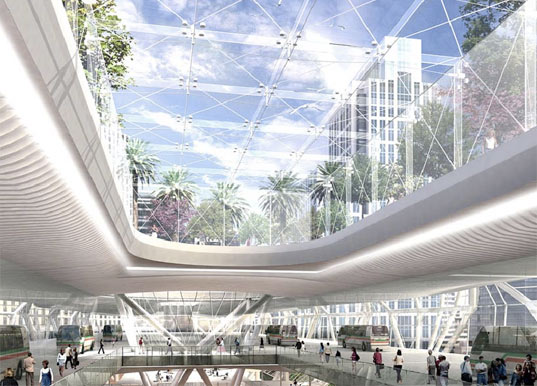
Rendering: Pelli Clarke Pelli
Portland, Oregon provides a cautionary tale in its I-205 light rail line. Building light rail along the interstate highway may have been the cheap and expedient thing to do, but a city official is now having second thoughts (via the Portland Tribune):
Metro Exec Questions I-205 MAX line
Although federal, state and local officials lined up to praise the Interstate 205 MAX light-rail line when it opened last September, Metro Chief Executive Officer Michael Jordan thinks it should have been built instead along 82nd Avenue.
“It would have spurred a lot more development there,†Jordan told reporters during a Tuesday morning press conference on regional infrastructure planning.
The Atlanta Journal-Constitution states the obvious:
Transportation Choices Attract Young Professionals
The debate between advocates of transit and supporters of highways often revolves around a metric that might appear simple and indisputable at first blush: dollars invested on a per-traveler, per-mile basis.
If one accepts this guiding principle, the case for roads often becomes stronger because public funds are simply used to pour asphalt and build bridges; passengers cover the costs of the actual cars themselves.
But public investment should never be viewed through such a myopic lens. If government is going to invest hard-earned tax dollars in infrastructure, it owes voters a comprehensive look at the cost and benefits of specific choices.
Aaron “The Urbanophile” Renn takes on Metra, Chicago’s commuter rail agency, as it proposes using scarce transit funding for the benefit of the trucking industry, and eliminating future capacity on the Union Pacific North Line in the process:
Help Stop Metra From Destroying Part of Chicago’s Transit Infrastructure
As incredible as it sounds, Metra, Chicago’s commuter rail agency, is planning to spend part the region’s precious transit capital funds for the benefit of road users – and do it in a way that permanently destroys a piece of Chicago’s transit infrastructure. If this sounds as crazy to you as it does to me, read on.
Finally, stories like this make me hesitant to mention the New York City subway when advocating for rapid transit in Cincinnati. If we ever get a rapid transit system, you have my word that I’ll make it my life’s mission to ensure that the eating of live rats is prohibited on our trains (via Gothamist):

